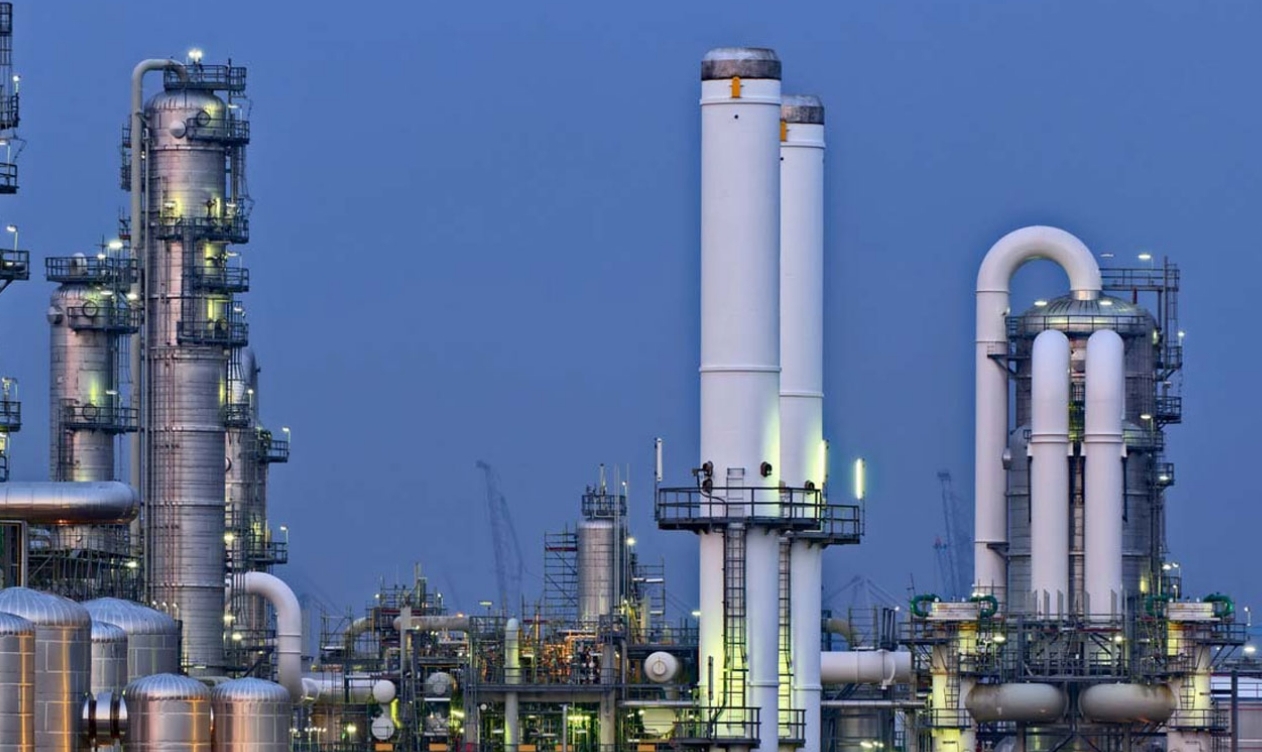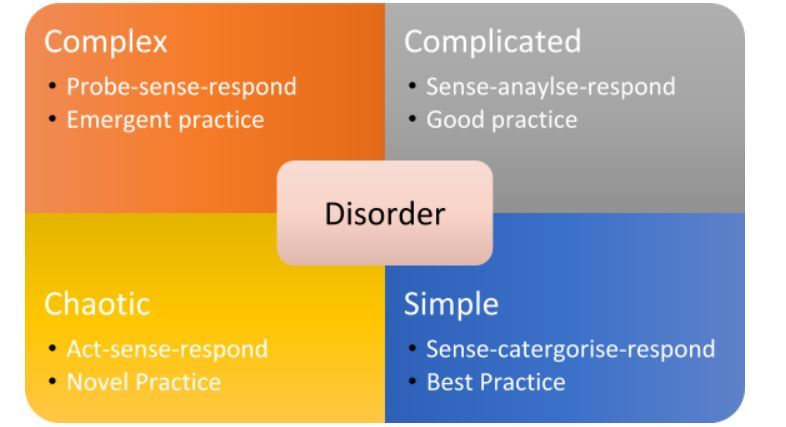Cynefin: A Framework For Thinking

Cynefin is a Welsh word for the place you are from: for your habitat. But it means much more than that. It means the many the layers of identify that makeup who you are. These comprise place but also language, family, tribe, village, all the ties that bind you to a sense of your self and all the complexity through which you have to navigate that identity. It is the name for a framework for thinking about change, a tool for analysis which is especially useful in the energy industry.
There are four segments in a Cynefin framework: Simple, complicated, complex and chaotic
The usual diagram used by practitioners looks like this, though there are variations:

The Simple box is the one in which when you are faced by the disorder of a new challenge or opportunity you know exactly what to do. You sense the disorder which means you need to look at it. Having seen it you can place into a category in which you know how to respond and you have a best practice process in place to deliver that response.
Your house is on fire. You know the fire has been caused by wood burning. You have put a fire like this out before. You put the fire out with water.
But what if the disorder produces a situation that you cannot immediately categorise based on your previous experience and apply remedies that you know to work? What if the disorder you face is in the Complicated box? Then you sense the disorder and if you cannot see how to categorise it, you have to analyse it. You need additional knowledge and expertise in order to respond. You then apply good practice to the situation to see if that works and if, over time, that works consistently when faced with this kind of situation you can move the response to that disorder from the Complicated box to the Simple box.
Your house is on fire. You are not sure what is burning in the fire or how it started. You check with a firefighter. You use water on some parts and smother other parts. The fire goes out.
Sometimes the disorder is multifaceted or fronted and/or unexpected in the range of dimensions it covers; this puts it in the Complex box. You sense there is disorder so you probe to establish what the dimensions of the problem are. When you begin to understand the challenge, you try new things (emergent practice) to solve the problem.
The fire and smoke seem to be coming from many different directions in your house, including from behind a closed door. You consult with experts who suggest an experiment with a wind machine to see if this can blow the fire out across the whole house, it has not been tried before but if it works it will deal with the problem.
Beyond the Complex is the Chaotic. There is so much disorder and it is so complicated that you have to act first and then ask questions after. When you have acted you then see what impact this has had and you respond.
Your whole neighbourhood is engulfed in wildfires which threaten your house and your means of escape. You have to act. You run.
There is one feature of this framework that is really important. The divide between the Simple and the Chaotic is a cliff. If you continue simply reacting to disorder by pushing more and more responses down the Simple path of best practice you will edge closer and closer to the edge of the cliff and eventually, you will fall into chaos.
This framework helps think about the current global situation in the energy market at a schematic level because it reflects the current picture of supply.
The world of energy is a series of flows and to understand those flows through pipelines, through seas, in tankers, is the heart of the energy trading business.
The routes of the pipelines cross the former Soviet Union to Europe, from central Asia to China, from the North Sea to Germany. The sea routes converge and rely on the straits of Hormuz a bottleneck that could cripple the world economy.
In the Simple case there is a problem of supply and the amount moving through pipeline increases. The reserves from other geographies are shipped more quickly. The price increases. The delay is never that long so best practice can kick in. Sometimes things get more Complicated and there are limits to what you can do with supply so you look at price to reduce demand and you analyse ways in which additional supply can be enhanced. If things get Complex you explore alternative routes and in some places there might be shortages and rationing of fuel or reduction of traffic tried as a means of depressing demand.
All this would be fine but right now we are deep into a crisis situation effecting the main artery for the supply of oil. Iraq is engulfed by a sustained revolt. Iran is facing the most significant unrest since the revolution. The Sultan of Oman has not been seen in public for months. The UAE and KSA are in direct conflict with Qatar. We are standing on the edge of the cliff between the Simple and the Chaotic. The options are limited so it is time to change the architecture of energy supply that comes from the region. When all is chaos, look at a map.
It would be useless right now to try but imagine if there was a secure land route and pipeline from the Gulf to Turkey and then to Europe.
Imagine for a moment the consequences for peace and energy security if this route could ever be delivered. A secure, well policed, well built and supported land route from Kuwait and the other Gulf states on the Persian Gulf to the Turkish board and then onto Europe. A new energy road that would supply the goods and services that the Gulf and the Indian subcontinent need and bring back fuel and finished goods that Turkey and Europe need. This would end the power of the straits over the world economy. It would speed up the movement of goods and services, it would transform the economy of the towns and villages along the route. It would change the energy supply, reducing delivery times and enabling faster delivery at a lower risk.
In some ways, a secure land route across Iraq would remake the shape and texture of the entire Middle East and therefore the world. It would need an immense political will and economic vision but if Qatar can build the stadia to deliver the world cup and the Kingdom of Saudi Arabia can build entire cities for women to study in. Surely then a secure road route could be constructed. A land route for Middle East oil – now that would be an emergent practice.
Francesco Mazzagatti is the CEO of Napag Trading
Leave a Reply